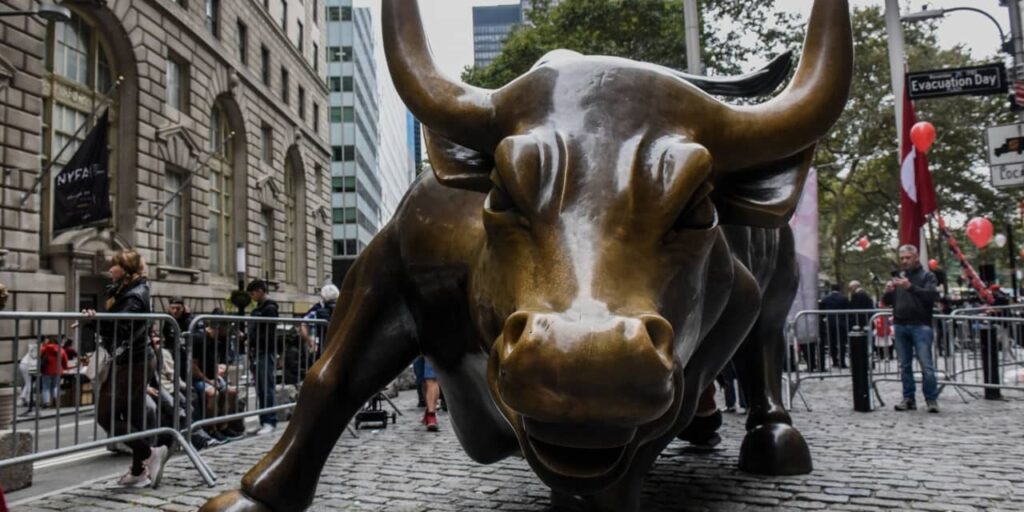The stock market isn’t just expensive, it is extremely pricey. And yet history indicates it can post impressive gains from the current level.
The
S&P 500
is up almost 15% for the year. That comes as investors increasingly expect the Federal Reserve will hold off on further interest-rate increases, which are meant to cool the economy but are trouble for stocks, because the rate of inflation has already declined. Also helping the market is the fact that that Big Tech stocks have surged because of hope that artificial intelligence will make existing products more appealing and open the door to new ones.
Now, the S&P 500 trades at about 18 times the aggregate earnings per share its component companies are expected to bring in over the next 12 months, well above the historical average of around 15 times. But that doesn’t fully reflect how costly stocks have become, especially given that the ratio has remained at above 20 for long periods in the past.
Whether stocks’ valuation is crazily high has a lot to do with the level of interest rates. With the index trading at 18 times earnings, an investor can expect about $5.50 in annual per-share profit for every $100 they invest in it.
That 5.5% is just 1 percentage point more than the 4.5% or so investors can get from holding safe 10-year Treasury debt. That extra return, known as the equity risk premium, is near a 20-year low, according to Morgan Stanley, far below the long-term average of closer to 3 percentage points.
if the premium were at its historical average level, the earnings yield on the S&P 500 would be at 7.5%. That is equivalent to the index trading at 13.3 times earnings, far below the current 18 times—a sign that the stock market is scarily expensive.
Yet history shows that when the equity risk premium is as low as it is now, stocks have tended to rise by double digits over the following year. When the S&P 500’s equity risk premium is between zero and 1%, its average move for the following year is just over a 12% gain, according to RBC.
It is when the equity risk premium is negative, with stocks yielding less than the S&P 500, that the index goes on to decline in the following year.
That isn’t what’s happening now. There are plenty of reasons people would buy stocks even with a narrow equity risk premium.
Today, the market is confident that over the next couple of years, earnings will turn out to be significantly higher than Wall Street has predicted, partly because that is what has been happening recently. The economy has continued to grow, defying expectations that the Fed’s efforts to fight inflation will bring on a recession, helping earnings surpass analysts’ estimates. Adding to the optimism is expectations that Big Tech will post double-digit annual EPS growth over the coming few years.
The likelihood that this favorable scenario will play out means that analysts will eventually raise their earnings forecasts. If stock prices stay where they are, the S&P 500’s forward price/earnings multiple would be lower, making the market look less expensive.
The earnings yield would rise, while bond yields may drop, further increasing the equity-risk premium. The 10-year yield is already down about a half a percentage point from its multiyear peak it hit in October. The average annual rate of inflation is only expected to be about 2% over the coming 10 years, which implies bond yields could fall.
“The downside momentum in the 10-year yield should build (and that will be a tailwind for stocks),” wrote Sevens Report’s Tom Essaye.
Investors are already looking at how to position themselves for that. RBC’s chief U.S. equity strategist, Lori Calvasina, wrote on Monday that in client conversations, “investors were keen to explore what [stocks] to own if yields have peaked.”
Can stocks rally on? That’s a reasonable expectation.
Read the full article here

